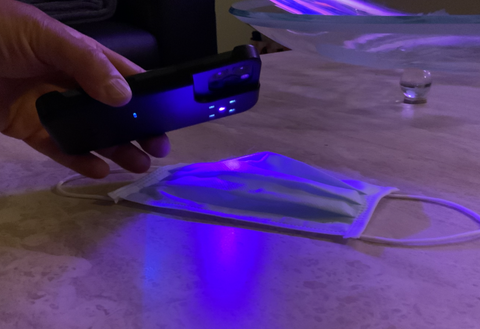On April 5th, 2021, the CDC issued a long awaited guideline (https://www.cdc.gov/coronavirus/2019-ncov/community/disinfecting-building-facility.html) outlining when to clean and when to disinfect at home and at work or school. To everyone’s relief, the guideline advises that we don’t need to use so many hazardous chemicals and environmentally unsafe wipes to disinfect everything we touch or eat because the risk of surface transmission is low. At home, “in most situations, cleaning alone removes most virus particles on surfaces. Disinfection to reduce transmission of SARS CoV-2 at home is likely not needed unless someone in your home is sick or if someone who is positive for COVID-19 has been in your home within the last 24 hours.”
The CDC guideline outlines differences between cleaning and disinfecting, and also when to deploy each process outside the home, and can be illustrated in a simple 2x2 matrix shown below. 
Unfortunately, there are many unknowns and gray areas, particularly if you are visiting a school, business or other institutional setting with which you may be unfamiliar.
As shown in the above illustration, when there is known high risk of transmission and low hygiene, for example environments where patients/people don’t wear masks or hygiene is inadequate, the CDC recommendation is to disinfect. Alternatively, for objects or environments where hygiene protocols are regularly followed, for example pens, counters, shopping carts, tables, doorknobs, light switches, handles, stair rails, elevator buttons, desks, keyboards, phones, toilets, faucets, and sinks which are cleaned at least once a day or ”as often as determined is necessary”, then CDC guidelines advise that cleaning is adequate. 

But confusion or uncertainty still may arise when intangible factors such as subjectivity, judgment and trust that others are making the right decisions regarding surfaces that one may encounter are unknown or unclear. For example, what if you are approaching a shopping cart in a supermarket, or are on a plane trying to open up the seat tray, or when checking into a hotel, getting on an elevator or trying to use the remote control to turn the TV on? What about using a drinking water fountain? In each instance, the immediate question is how do you assess risk of contamination and also how would you clean the suspicious surface before touching it if soap and water are not immediately available or suitable?
Yet another complication is that the CDC recommends putting a wipeable cover on electronic equipment such as tablets, touch screens, keyboards, remote controls, and ATMs, that makes cleaning and disinfecting easier. However, the cover may interfere with the operation of touch sensitive screens, tactile feel and cursor control.
One unexpected benefit of the COVID-19 pandemic has been that, due to wide adoption of extra hygiene measures, the infection rate for other commonly transmitted diseases such as the common cold and the seasonal flu (many transmitted via surfaces) significantly dropped. However, if we relax from hygiene habits developed during the COVID-19 pandemic, it is likely that we will see an increase in the other communicable diseases and infections. Hospital Acquired Infections (HAI) runs at 5%-30% in North American hospitals.
The CDC guideline further advises, “The effectiveness of alternative surface disinfection methods such as ultrasonic waves, high intensity UV radiation, and LED blue light against the virus that causes COVID-19 has not been fully established.” On the other hand, the benefit and efficacy of some of these sources to inactivate many types of germs has been known for a long time. Additionally, there are more recent publications centered around the efficacy of UV light especially regarding the SARS CoV-2 virus. An intelligently designed UV source doesn’t need to be high intensity to be effective. Although excess UV radiation exposure of skin and eyes should be avoided, properly designed tools can be an outstanding weapon against SARS-CoV-2 and many other pathogens if one is unsure whether to clean or disinfect and one may not have traditional cleaning and disinfecting methods or products at their disposal.
V-Go™ by Safer Planet™ a personalized UV source integrated in an iPhone case, is one example of how one may minimize infection risks of unknown microbes in commonly encountered environments. V-Go™ can be your go-to cleaning or sanitizing solution because it has been proven to work on many different surfaces such as metal, glass, plastic and cotton (face mask). In laboratory tests, 1 second irradiation with V-Go™ inactivated E coli and prevented growth of colonies, and unlike wet disposable wipes, V-Go™ is environmentally friendly and doesn’t use any chemicals. In fact, a V-Go™ case can be used in virtually every situation regardless of whether you are at home, at work or at play when you need to touch an object or surface whose hygiene or sanitary condition and history are unknown. V-Go™ is your go to cleaning and disinfecting solution combined into one. “When in doubt, V-Go it out”








